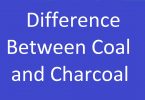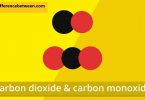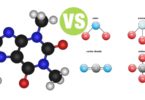The food that we eat contains nutrients and these nutrients have energy. This energy has to be extracted by the body, through different metabolic reactions. The final energy currency in the cell is ATP that is used for all reactions that take place during catabolism and anabolism. The Difference between ATP and ADP is that ADP contains two molecules of phosphate while ATP contains three molecules of phosphate.
They both have their own functions in the body. ADP is often converted into ATP when there is a need for energy. When ATP breaks down, it forms ADP and a pyrophosphate molecule. Both of these molecules act as activators and inhibitors of some enzymes, provide energy and are involved in important reactions.
ADP: Definition and Formula.
ADP is the abbreviation for adenosine diphosphate and it is an organic compound that is produced in the body. It is important for energy flow throughout the cells. The structure of ADP consists of the following components: a sugar molecule attached to adenine base with two phosphate groups that are bonded to ribose sugar at Carbon 5. Adenosine base is attached at the first carbon of the sugar.
Cycling of ADP is important in the body as it provides the energy needed for metabolic reactions. It can be broken down into AMP and converted to ATP by addition of a phosphate group. The energy present in this molecule is potential energy as it is stored and can be used whenever needed.
This energy is actually present between the phosphate bonds of the molecule. These bonds are broken down to give the energy that drives chemical reactions.
ATP: Definition and Formula.
As mentioned above, the Difference between ATP and ADP is the number of phosphate groups present in the molecule. This molecule is the energy currency of the cell and it is important for processes like muscle contraction, the transmission of nerve impulse, synthesis of biomolecules, etc.
ATP is found in all forms of life and it is converted to ADP when it is consumed in a reaction. Some enzymes use ATP as a coenzyme and it also acts as an inhibitor and activator of some enzymes. Moreover, ATP is also used as a precursor of nucleic acid in the body.
Just like ADP, ATP also has a sugar group and an adenine molecule. However, it has three phosphoryl groups rather than two and they are called alpha, beta and gamma. 2 ATP molecules are produced during glycolysis.
The NADH produced in the process are also converted to ATP by ATP synthase, during electron transport chain. ATP also acts as a regulator in glycolysis as it inhibits pyruvate kinase and phosphofructokinase.
Summary of Difference Between ATP and ADP:
- The Difference between ATP and ADP is that ATP contains three phosphate molecules while ADP has two phosphate groups.
- They both can be converted to each other by removal and addition of a phosphate group.
- Another Difference between ATP and ADP is that ADP is needed for the cellular processor as a coenzyme while ATP is the main source of energy for cells.







Leave a Comment
You must be logged in to post a comment.